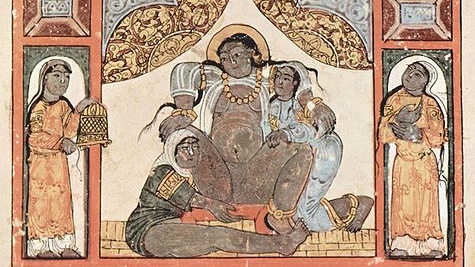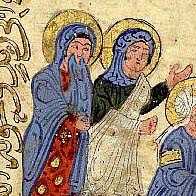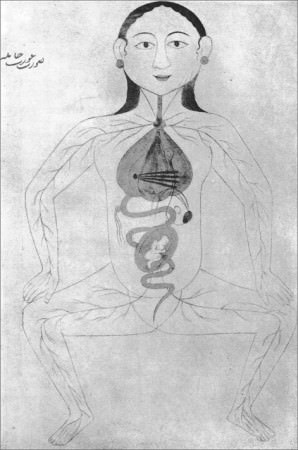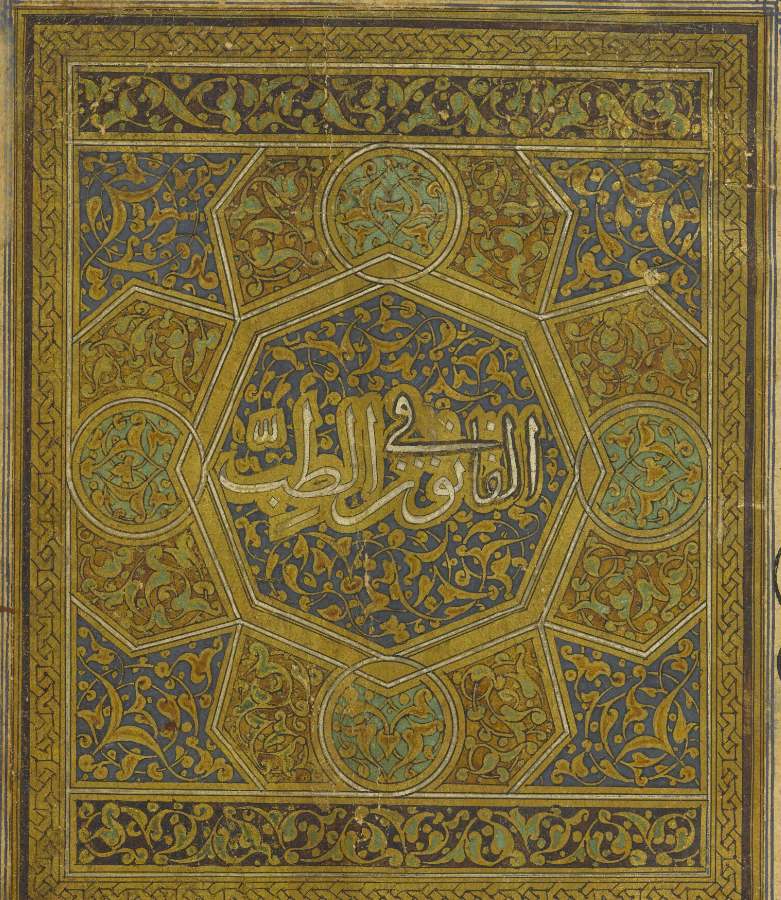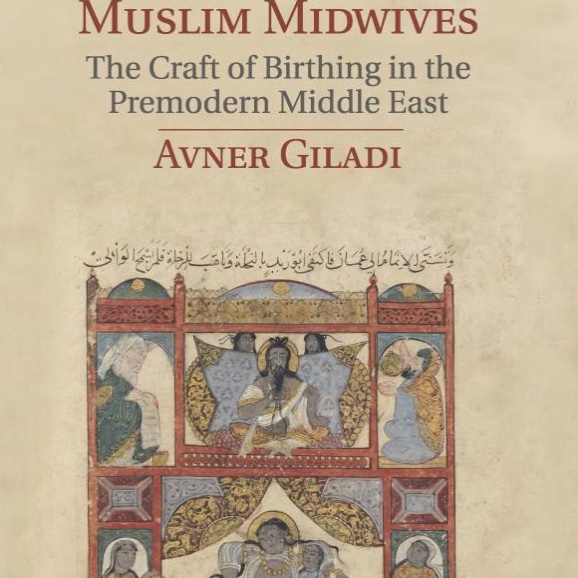Women played important roles in health care in the classical Islamic world.
A thread on female health practitioners
(Illustration: BnF ms Arabe 5847, fol 122b, painted in 1237)
A thread on female health practitioners
(Illustration: BnF ms Arabe 5847, fol 122b, painted in 1237)
Women in the medieval Islamic world did not write any medical works that we know of today.
But there are plenty of references to women working as midwives and practitioners, for example in medical texts, biographies, and literary works. (2/)
But there are plenty of references to women working as midwives and practitioners, for example in medical texts, biographies, and literary works. (2/)
In pre-Islamic Arabia women worked as healers frequently.
Zaynab of the tribe of Awd, for instance, worked as a physician (ṭabība) in the 6th century and cured eyesores and inflammation.
(3/)
Zaynab of the tribe of Awd, for instance, worked as a physician (ṭabība) in the 6th century and cured eyesores and inflammation.
(3/)
There is even poetry written about her:
"Will the vagaries of Fate take me away before I have visited
the physician of the Banū Awd, Zaynab, in spite of the distance?"
أمخترمي رَيْبُ المَنونِ ولم أزُرْ
طبيبَ بني أوْدٍ عـلـى النـأْي زينـبا
https://dh.brill.com/scholarlyeditions/reader/urn:cts:arabicLit:0668IbnAbiUsaibia.Tabaqatalatibba.lhom-ed-ara1:7.10?right=lhom-tr-eng1&q=Zaynab&qk=form
(4/)">https://dh.brill.com/scholarly...
"Will the vagaries of Fate take me away before I have visited
the physician of the Banū Awd, Zaynab, in spite of the distance?"
أمخترمي رَيْبُ المَنونِ ولم أزُرْ
طبيبَ بني أوْدٍ عـلـى النـأْي زينـبا
https://dh.brill.com/scholarlyeditions/reader/urn:cts:arabicLit:0668IbnAbiUsaibia.Tabaqatalatibba.lhom-ed-ara1:7.10?right=lhom-tr-eng1&q=Zaynab&qk=form
(4/)">https://dh.brill.com/scholarly...
In one of the first medical compendia, the 9th-century Firdaws al-Ḥikma, the physician ʿAlī b. Sahl Rabban al-Tabbarī writes that he won& #39;t talk too much about paediatrics, because old women and midwives (qawābil) know more about this than he does.
(5/)
(5/)
That women did a lot of work in paediatrics and gynaecology also appears from al-Rāzī& #39;s (died 925) Kitāb al-Ḥāwī. He mentions women who examine other women, help women to conceive with the aid of herbs, and assist with deliveries.
(6/)
(Bnf, MS arabe 3929 fol 134)
(6/)
(Bnf, MS arabe 3929 fol 134)
He also includes their successful remedies, for instance to cure smallpox (judarī), which he says women manage to dry out using the leaves of lilies:
النِّسَاء يستعملن فِي تجفيف الجدري ورق السوسن ورأيته يجفف تجفيفاً بَالغا
(7/)
النِّسَاء يستعملن فِي تجفيف الجدري ورق السوسن ورأيته يجفف تجفيفاً بَالغا
(7/)
Women worked together with male physicians, too. Al-Rāzī, for instance, advises a physician on how to guide a woman examining a woman& #39;s cervix.
(Illustration of pregnant woman, Wellcome Library: https://www.thelancet.com/journals/lancet/article/PIIS0140673609608953/fulltext)
(8/)">https://www.thelancet.com/journals/...
(Illustration of pregnant woman, Wellcome Library: https://www.thelancet.com/journals/lancet/article/PIIS0140673609608953/fulltext)
(8/)">https://www.thelancet.com/journals/...
In Ibn Sīnā& #39;s Canon, women assist in difficult deliveries, extract placenta, and remove the dead foetus in case of miscarriage.
(9/)
(9/)
This assisting role has led Avner Giladi to speak of "the subordinate midwives" in his discussion of this topic.
https://www.cambridge.org/core/books/muslim-midwives/16EBB34BAD9A7F0D3089B3F0153F8388
(10/)">https://www.cambridge.org/core/book...
https://www.cambridge.org/core/books/muslim-midwives/16EBB34BAD9A7F0D3089B3F0153F8388
(10/)">https://www.cambridge.org/core/book...
But women also worked as practitioners independently.
The physician Sā‘id ibn al-Hasan (died 1072) writes that most people when they get ill consult their wives, mothers, aunts, or other family members or neighbours as physicians.
(11/)
The physician Sā‘id ibn al-Hasan (died 1072) writes that most people when they get ill consult their wives, mothers, aunts, or other family members or neighbours as physicians.
(11/)
These patients listen to women better than they do to male physicians, and take whatever medicine they order. He is surprised they even get cured at all!
(12/)
(12/)
But there is no reason to think that people generally believed that women provided bad healthcare.
The Andalusian Umm ʿAmr (12th century) was a member of the famous medical family of the Banū Zuhr, who followed in her family& #39;s lead.
(13/)
The Andalusian Umm ʿAmr (12th century) was a member of the famous medical family of the Banū Zuhr, who followed in her family& #39;s lead.
(13/)
She had mostly women and children as patients, but was so successful that men consulted her too, according to the biographer Ibn ʿAbd al-Malik
https://archive.org/details/WritingTheFeminineWomenInArabSources/page/n91/mode/2up
(14/)">https://archive.org/details/W...
https://archive.org/details/WritingTheFeminineWomenInArabSources/page/n91/mode/2up
(14/)">https://archive.org/details/W...
Al-Rāzī even worries about the competition of women. Part of the title of one of his books reads:
“On what causes ignorant physicians, the general public, and women in the cities to be more successful in some of their treatments of diseases than the learned”
(15/)
“On what causes ignorant physicians, the general public, and women in the cities to be more successful in some of their treatments of diseases than the learned”
(15/)
He recounts one instance in which he treated a man for bladderstones, who got impatient with his treatment and went to a woman. And she cured him right away!
According to al-Rāzī he should have been more patient with him.
(16/)
According to al-Rāzī he should have been more patient with him.
(16/)
Al-Tanūkhī (d.994) in his anthology hints at the importance of women& #39;s care in rural areas. He tells the story of a man who stayed at a farmer and suffered from pustules on his leg. The farmer recommends the woman in his village who is known to cure these pustules.
(17/)
(17/)
She comes, casts a spell over the pustules, applies ointments, and a few days later the man is cured.
This has been discussed for instance by Nadia Maria el-Cheikh:
https://archive.org/details/WritingTheFeminineWomenInArabSources/page/n83/mode/2up
(18/)">https://archive.org/details/W...
This has been discussed for instance by Nadia Maria el-Cheikh:
https://archive.org/details/WritingTheFeminineWomenInArabSources/page/n83/mode/2up
(18/)">https://archive.org/details/W...
So, although women did not participate so much in the writing of medical theory, we can gather plenty of information on their roles in health care.
To read more see for instance Avner Giladi& #39;s work on Muslim midwives: https://www.cambridge.org/core/books/muslim-midwives/16EBB34BAD9A7F0D3089B3F0153F8388
(19/)">https://www.cambridge.org/core/book...
To read more see for instance Avner Giladi& #39;s work on Muslim midwives: https://www.cambridge.org/core/books/muslim-midwives/16EBB34BAD9A7F0D3089B3F0153F8388
(19/)">https://www.cambridge.org/core/book...
and these articles on female patients and carers by Peter Pormann: https://www.thelancet.com/journals/lancet/article/PIIS0140673609608953/fulltext
and">https://www.thelancet.com/journals/... https://www.aspetar.com/journal/viewarticle.aspx?id=202#.XtFmwC3My8U
as">https://www.aspetar.com/journal/v... well as Pormann and Savage-Smith, Medieval Islamic Medicine.
(20/end)
and">https://www.thelancet.com/journals/... https://www.aspetar.com/journal/viewarticle.aspx?id=202#.XtFmwC3My8U
as">https://www.aspetar.com/journal/v... well as Pormann and Savage-Smith, Medieval Islamic Medicine.
(20/end)

 Read on Twitter
Read on Twitter